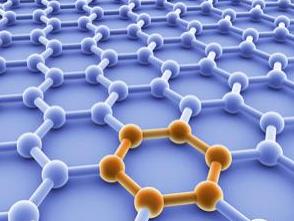
Graphene's transparent and conductive properties are expected to further speed up the computer's computing speed while addressing bottlenecks in heat dissipation. Although the current high cost of producing graphene films makes the current economic feasibility of this technology still low, researchers are expected to solve this problem in the short term. Graphene with great future is expected to drastically change the face of the technology industry.
CNN Money recently published a special article introducing the magical material of graphene, which may change the technology industry. Graphene is a monolayer graphite material that was successfully separated from graphite by the Russian physicists Andre Geim and Konstantin Novoselov of the University of Manchester, UK. Both of them also won the 2010 Nobel Prize in physics for their graphene research.
Graphene is composed of several carbon atoms arranged in a hexagonal pattern to form an ultra-thin flat nanomaterial that resembles a honeycomb. It is currently the thinnest nanomaterial that humans can produce. Due to the different types of bonding between carbon atoms, graphene has completely different properties from other families of carbon atoms, such as diamonds.
Jeanie Lau, a professor at the University of California, Riverside Department of Physics, explained that graphene has 10 times better thermal conductivity than copper and 100 times better electrical conductivity than germanium. It is the lowest known material at room temperature. In addition, graphene is transparent, such as plastic, extremely light, tougher than steel but more than a hundred times flexible.
The above characteristics mean that the speed of electronic transmission in the future will be faster. Graphene-made computer chips will enable computer computing speeds to more than 10 times today. In addition, the excellent heat resistance of graphene can also solve the problem of heat dissipation during high-speed computing.
Combining transparency and conductivity, Graphene, which is extremely futuristic, is considered to be the best material for future mobile devices. Samsung Electronics released a press release on the 4th that there has been a breakthrough in the synthesis of graphene production.
In the past, researchers made large-area graphenes through polycrystalline synthesis, but they destroyed conductivity, making graphene applications limited and difficult to commercialize. However, Samsung claims that it has successfully developed graphene film, which will be used in smart phone touch screens.
In addition to mobile phones, graphene is expected to be used in high-tech devices such as wearable electronic devices, aerospace components, broadband optical detectors, and radiation protection coatings. In the future, it can be made lighter than plastic and its strength is stronger than that of iron and steel. In place of existing materials, it can be widely used in automobiles, airplanes and satellites.
Despite its potential, it still takes some time to commercialize graphene applications. Band-gap engineering is still the biggest challenge in the development of graphene transistors and computer chips. At this stage, graphene still cannot fully replace the flaws in the CPU.
But researchers believe that breaking this bottleneck is only a matter of time. Researchers at the University of Manchester pointed out that these obstacles are expected to be resolved with time and effort. In the nearly 2 trillion US dollars of the global electronics industry, the potential of graphene cannot be underestimated.
Remote Trainer,Auto Trainer,Remote Collar,Best Remote Dog Training Collar
Elite-tek Electronics Ltd , https://www.aetertek.ca